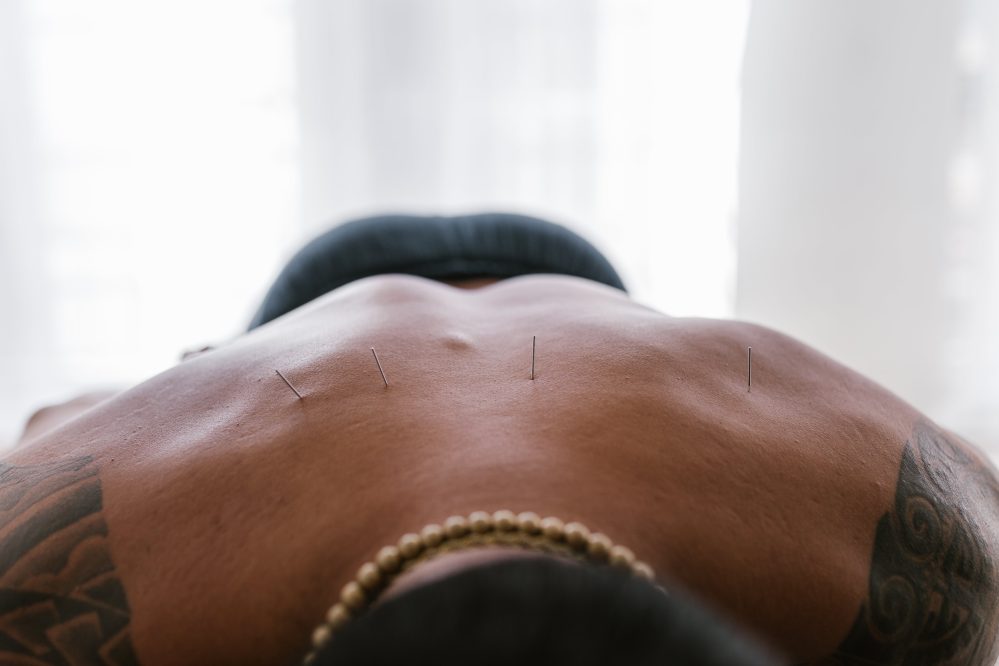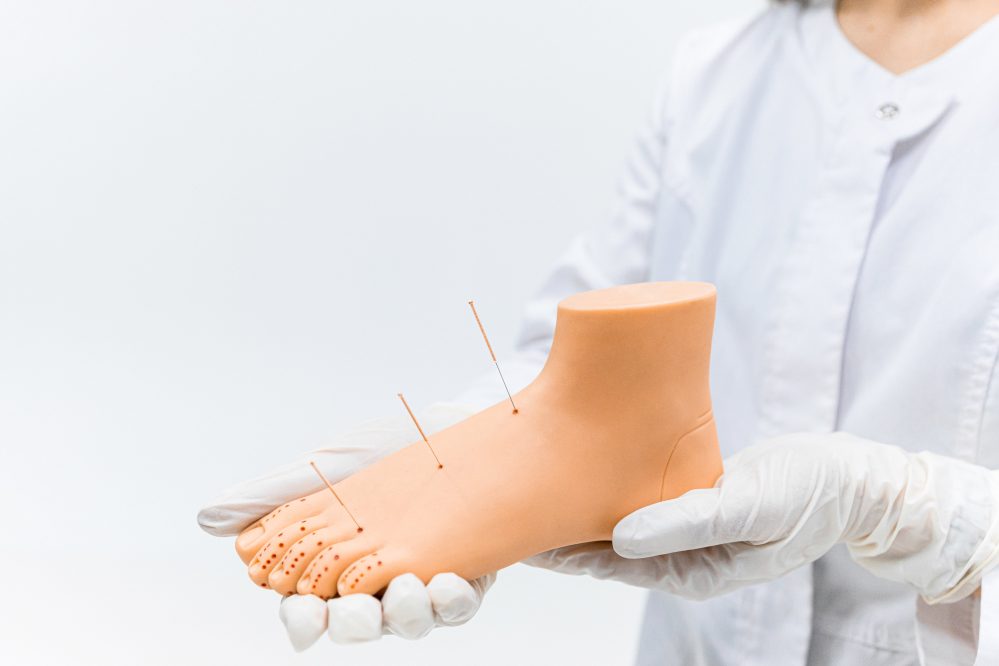When acupuncture was first introduced, it placed significant importance on meridians, conceptualized as complex channels in the human body. Originating from traditional Chinese medicine, acupuncture is recognized as a tool for regulating the energy flow, a component critical to health and overall well-being.
This blog invites you to learn more about the acupuncture meridians and their role. Understanding how meridians work is vital if you’re interested in alternative medicine and holistic well-being!
What Are Acupuncture Meridians in Traditional Chinese Medicine (TCM)?
In Traditional Chinese Medicine (TCM), meridians constitute a system of pathways within the human body through which the energy or “qi” (pronounced “chee”) flows. Qi is the life force or vital energy essential for maintaining harmony and properly manifesting the body’s physiological functions. The role of acupuncture as an alternative approach is to treat energy blocks and imbalances through meridians to ensure better health.
In the human body, there are:
– Twelve Major or Primary Meridians
– Eight Extraordinary Vessels
– Twelve Divergent or Distinct Meridians
How Do Meridians Work?
According to Traditional Chinese Medicine, the disruption of energy circulating through meridians, which can be caused by stress, emotions, and other external influences, ultimately causes pain and clinical problems. Therefore, as TCM believes, along the meridians lie specific acupuncture points, which can be triggered with thin needles to moderate energy flow and thus improve health and well-being.
The procedure is carried out by licensed acupuncturists who carefully place the sterilized needles in various body areas depending on the target. While you might feel a sense of tingling, needle insertion shouldn’t hurt. Needles should remain in place for 20 to 30 minutes, during which time the acupuncturist might twist or thrust them for maximized effect.

Why Are Meridians Important in Acupuncture?
Besides forming the basis for acupuncture points, here are several reasons why meridians are important in acupuncture:
Qi Flow Regulation – Much like the circulatory system of blood, the system of meridians regulates the energy flow to optimize health.
Organ System Connection – Each meridian is thought to connect to a specific organ system in the body. By targeting said meridians, acupuncture resolves disharmonies and the pain associated with that organ.
Yin-Yang Balance – Meridians are interconnected with the concepts of yin and yang, representing the dual nature of opposing forces. Regulating these concepts is considered crucial to maintaining health and avoiding illness.
Holistic Approach – Acupuncture adopts a holistic approach to health, targeting body, mind, and spirit. Meridians thus serve as tools for combating health issues and investigating their underlying causes.
12 Standard or Principal Meridians
The 12 principal meridians in acupuncture are divided into yin-yang groups, further categorized into meridians associated with the arms and legs. These meridians play a fundamental role in acupuncture and the broader framework of TCM.
The Yin Meridians of the Arm
Four yin meridians are located in the arm, each corresponding to a specific area. These meridians are used to maintain the function of bodily systems by promoting the smooth flow of qi. The yin meridians of the arm are:
Lung Meridian starts in the front of the shoulder and ends at the thumb. The lung meridian is connected to the respiratory system, where acupuncture points serve as a means to address respiratory conditions and control the flow of qi and blood in the lungs.
Element: Metal
Heart Meridian starts near the armpit and ends at the small finger. The heart meridian is linked to the cardiovascular system. Acupuncture points along this meridian often influence heart function and target emotional imbalances.
Element: Fire
Pericardium Meridian begins in the chest and ends at the middle fingertip. Also known as the Circulation Sex Meridian, the Pericardium Meridian is associated with the pericardium and heart and is used to regulate emotional well-being and balance heart energy.
Element: Fire
The Yang Meridians of the Arm
Similarly, here is the list of the yang meridians in the arm:
The Large Intestine Meridian begins at the outside of the index fingernail and ends just below the nose. Its primary association is the digestive system. Acupuncture points along the meridian associated with the large intestine balance the body’s fluids and promote bowel function.
Element: Metal
The Small Intestine Meridian is located from the tip of the little finger to the front of the ear. The small intestine meridian is responsible for absorbing nutrients and digesting waste. This one also works with the heart meridian to control emotions.
Element: Fire
The Triple Burner Meridian starts from the tip of the finger and ends at the outer tip of the eyebrow. While it is not associated with a specific organ, this meridian is believed to moderate the body’s temperature and overall energy balance.
Element: Fire
The Yin Meridians of the Leg
We will now move on to explore the yin meridians of the leg, which are:
The Spleen Meridian is also closely related to the digestive system, and it works to transform and transport nutrients. You can locate the spleen meridian starting at the tip of the toe and moving up underneath the front of the shoulder.
Element: Earth
The Kidney Meridian is vital for water metabolism and is associated with the reproductive system. Acupuncture points along this meridian are used to support kidney function and navigate issues with fertility. The kidney meridian starts at the foot and ends at the inner collarbone.
Element: Water
The Liver Meridian begins inside the big toe and moves up the leg, ending at the chest. Acupuncture points in this meridian promote the detoxification of the blood and regulate the function of the liver.
Element: Wood

The Yang Meridians of the Leg
Finally, let’s delve into the yang meridians of the legs, starting with:
The Stomach Meridian begins under the eye and ends at the big toe’s outside edge. The stomach meridian is also related to the digestive system. It is responsible for extracting the energy from food and beverages while promoting stomach function.
Element: Earth
The Bladder Meridian is the longest, located from the inner eye, up the skull, down the back of the leg, and finally ends at the small toe. The bladder meridian is associated with water metabolism and navigates bladder issues.
Element: Water
The Gallbladder Meridian aids in decision-making and supports the body’s ability to take action and carry out plans. This meridian begins on the outer corner of the eye and ends on the outer edge of the 4th toe.
Element: Wood
The 8 Extraordinary Meridians
A more dynamic flow of qi characterizes the eight extraordinary meridians. These are named after the particular function they provide. Although they interact with the twelve primary meridians, the extraordinary meridians don’t have a yin/yang relationship or their own acupuncture points, except for two. Nevertheless, they borrow points from the primary meridians.
Here is a quick overview of the eight extraordinary meridians:
Conception Vessel (Ren Mai) is concentrated along the midline of the front of the body and is associated with the concept of birth and life nourishment. It is often used in treating gynecological and reproductive issues.
Governing Vessel (Du Mai) is located along the back of the body and is the focal point for governing the qi of all yang meridians. The governing vessel is primarily used to treat stiffness in the spine and regulate the nervous system.
Penetrating Vessel (Chong Mai) corresponds with the blood and respiratory system, thus targeting heart, chest, and stomach issues. In TCM, this meridian is also regarded as the Sea of Blood.
Girdle Vessel (Dai Mai) can be found around the waist and is thought to balance the upper and lower parts of the human body. The girdle vessel is often used to navigate emotional imbalances and to treat musculoskeletal issues.
Yin Linking Vessel (Yin Wei Mai) connects the yin meridians and regulates emotions and Yin energy. On a deeper level, this meridian concerns the meaning we derive from life and how we respond to daily situations.
Yang Linking Vessel (Yang Wei Mai) connects the Yang meridians, regulating emotions and the Yang energy. Dominating the body exterior, Yang Wei Mai also controls chills and fever.
Yin Motility Vessel (Yin Qiao Mai) is connected to the conception vessel. It is responsible for moderating the Yin energy and treating imbalances like issues with self-trust and the prevalence of doubt.
Yang Motility Vessel (Yang Qiao Mai) is paired with the governing vessel to maintain the proper Yang energy flow. As such, it is used to target conditions such as epilepsy, insomnia, and excessive thinking.
Key Takeaways
In traditional Chinese medicine, meridians represent a complex system of pathways critical for the uninterrupted energy flow in the body, ensuring health, emotional stability, and balance. The 12 primary meridians, further categorized as yin and yang meridians, are responsible for specific organs and their function. On the other hand, the Eight Extraordinary Meridians play a unique role in addressing deeper imbalances within the body’s energy system. Understanding the intricacies of each meridian in TCM is crucial for optimizing health and promoting well-being.
Frequently Asked Questions (FAQs)
What are the most important acupuncture points?
The importance of acupuncture points depends on the condition being addressed. While more than 2,000 acupuncture points are ingrained in our bodies, each can target specific health issues and organ dysfunction.
How do you know if your meridians are blocked?
Various signs and symptoms that individuals may notice could suggest possible meridian blockage. These are pain and discomfort, limited range of motion, emotional imbalances, and skin changes.
Are meridians the same as pressure points?
Although closely related, meridians and acupuncture pressure points are different. Meridians represent a broader concept, a system of pathways where the energy runs. Pressure points are located along these meridians and are utilized to enhance health.